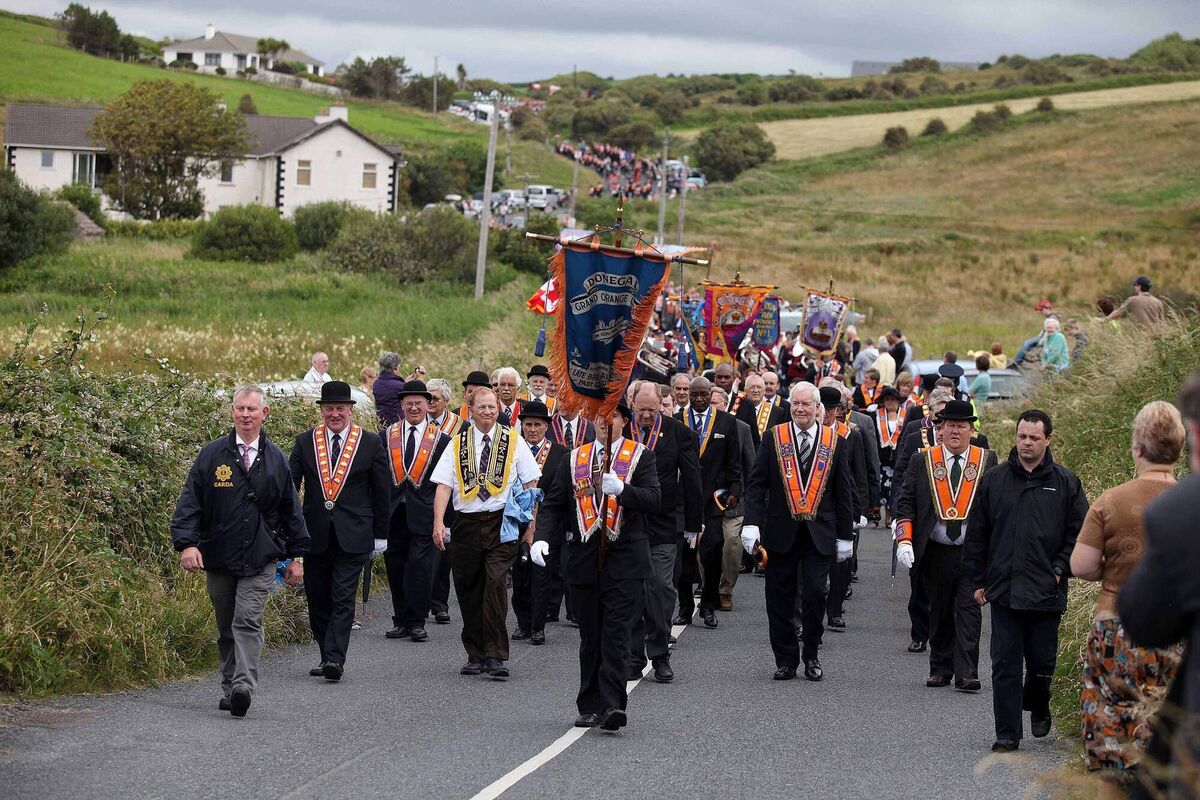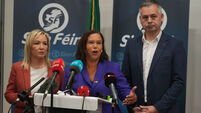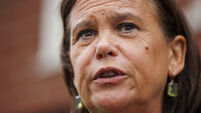Emma DeSouza: There's no 'gotcha' in Heather's Orange Order connections

(Left to right) Heather Humphreys' husband Eric, Heather Humphries, her grandson Arthur, her daughter Eva, her grand daughter Charlotte, and Charlotte's husband Sean. File photo: Sam Boal/Collins
Heather Humphreys’ presidential campaign launch took an unexpected and somewhat bizarre turn when news that her husband was a member of the Orange Order half a century ago was splashed across newspaper front pages, with the tacit suggestion that the revelation was somehow consequential to her bid for office.
While a large proportion of its membership can be found in Northern Ireland, the Orange Order has been in operation across the island of Ireland since 1795 with members in border counties such as Monaghan and Donegal, hosting 20 Orange Order events in the Republic each year.
As a former minister and politician for 14 years, Humphrey's Ulster protestant past is no secret, nor should it need to be.
The Orange Order is not without its controversy; the fraternal organisation has a long history of sectarian incidents. The role the organisation played in promoting sectarianism during the Troubles, and indeed post-Good Friday Agreement, are deeply problematic, but its members are not some homogenous beehive engaged in anti-Catholic groupthink.

Humphreys is from a border constituency with a small, orange order community. As someone who has lived in both Belfast and Fermanagh, I have found that both the celebrations around the Twelfth of July and Orange Order events in border communities can be starkly different from those held in places like Belfast.
Marching parades are not inherently designed to intimidate or provoke like they do in areas such as Drumcree, there are no controversial bonfires littered with hate speech, events are more inclusive and communities are more tolerant.
It is therefore no surprise to me that Humphreys has attended cross-community Orange Order events in Monaghan, much like many other politicians, and indeed other people living in border communities.
Border communities benefit from a greater sense of unity borne in many ways out of necessity; more isolated and further from the political system, members of those communities situated along the border lean more on one another.
The fluidity of border living creates more opportunities for interactions across cultural and religious differences, and that sense of community fosters a higher level of tolerance and respect for difference. As a result, Orange Order events in Donegal, Monaghan or Fermanagh can manifest in a very different way from places like East Belfast.
Despite the many struggles this island has endured under British colonialism and partition, the resultant demographical shifts as well as the modern plurality of identities that migration, both to and from Ireland, has introduced are to be celebrated and embraced should we wish to reconcile this island.
If we hope for a shared future, we must embrace our diversity. Heather Humphreys is a presbyterian, her father before her was a member of the Orange Order, and her grandfather signed the Ulster Covenant, yet she is a proud Republican who supports a United Ireland.
This kind of history and diversity of political opinion is not unique to her family; it exists in families across this island. The colour orange serves an integral and symbolic role in Ireland’s Tricolour that should not be forgotten.
The Irish nation is a diasporic people, forced to migrate to avoid famine, war, and subsequently economic inequality, yet there is an increased hostility within Irish society toward migrant communities that has its roots in a malformed caricature of what it means to be Irish.
The idea that we should feel negatively toward the family history of Humphreys feeds into a wider narrative that seeks to define Irish identity by exclusion.
We cannot lose sight of the strength in our diversity, and the richness that the many variations and forms of Irish identity woven into our shared culture, whether it be Ulster protestants, the Traveller community, or the growing number of migrants choosing to call Ireland their home.
The challenge going forward for Humphreys is less the relevance of her husband’s prior membership and more in how she handled the question; clearly taken off guard, the presidential hopeful struggled to give a clear answer and has since sought to clarify that the last time she had attended an Orange Order event was allegedly in 2014.
Rather than burying the story, she and her party's efforts to disassociate her from her family's history with the Orange Order, whilst simultaneously framing herself as an example of tolerance for unionists in Northern Ireland, creates a messy contradiction.
It is not outside the realm of possibility that the next president of Ireland could be in office during a referendum on a united Ireland. What matters most is electing a candidate who has the potential to meet that moment; a president who has moral clarity, personal fortitude, and the courage to be a symbol for all Irish citizens.
As an Irish person in Fermanagh, I don’t get to vote for my president. I can only watch from the sidelines as a restricted electorate, perhaps cynically designed to maintain the status quo, makes that decision for me alongside millions of other Irish citizens excluded from this election.
For those unable to cast a ballot, having the right to vote for the president is a privilege, one I hope eligible citizens will take seriously on October 25.











